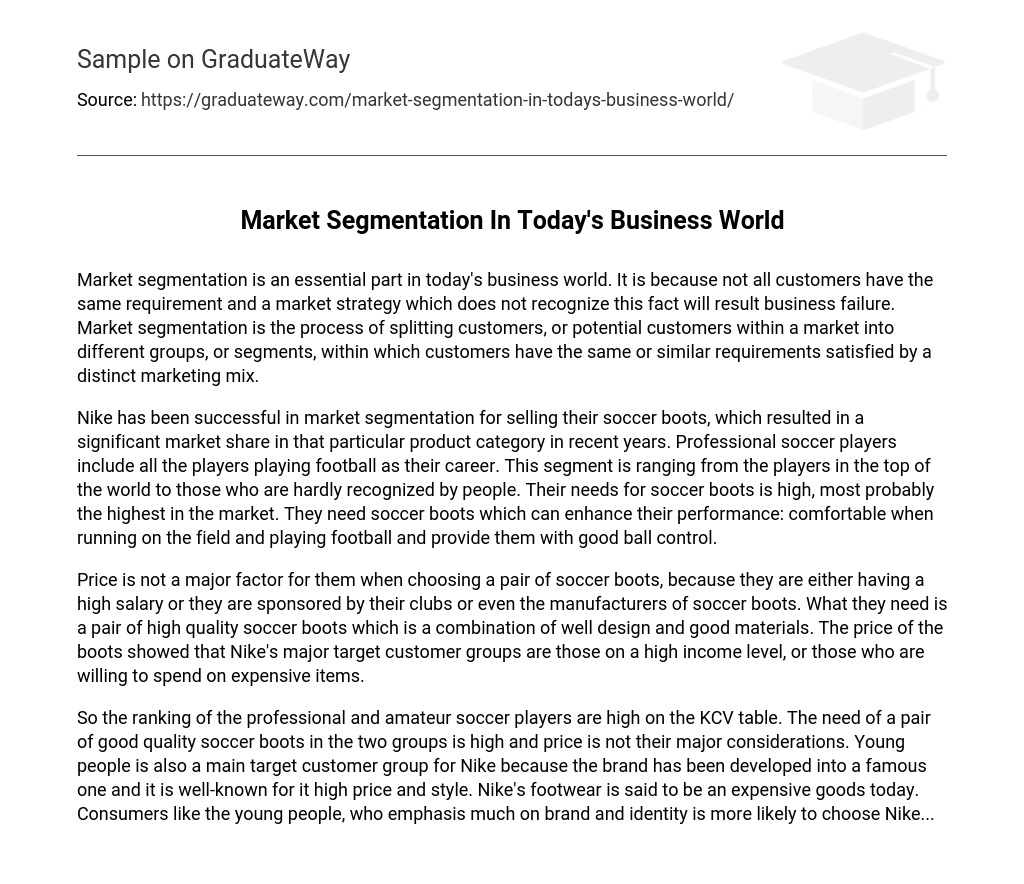Market segmentation is crucial in the contemporary business environment as it acknowledges the varying needs of customers. Failure to acknowledge this fact will result in business failure. Market segmentation involves dividing customers or potential customers in a market into distinct groups or segments. These segments comprise customers with similar or identical requirements that can be catered to through a specific marketing mix.
Nike has been successful in capturing a significant portion of the soccer boot market by catering to various customer segments. This includes professional soccer players, both internationally recognized athletes and lesser-known individuals who have made football their career. Among these segments, professionals have the highest demand for soccer boots that can enhance their performance by offering comfort during running and playing on the field while also providing excellent ball control.
Professional soccer players do not prioritize price when selecting their boots, as they either have high salaries or receive sponsorship from their clubs or boot manufacturers. Their main priority is to find well-designed and high-quality boots made with good materials. The expensive price of Nike boots suggests that the brand primarily caters to customers with a higher income or those who are willing to invest in costly items.
Both professional and amateur soccer players highly value their ranking on the KCV table. The demand for high-quality soccer boots is significant in both groups, and price is not their main concern. Nike primarily targets young people as customers because its brand has gained fame for its high prices and stylish products. Nike footwear is now considered expensive goods. Consumers, particularly the younger generation, who place great importance on brand and identity, are more inclined to choose Nike…





